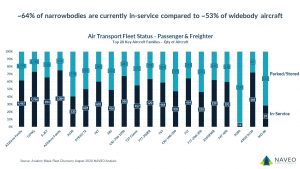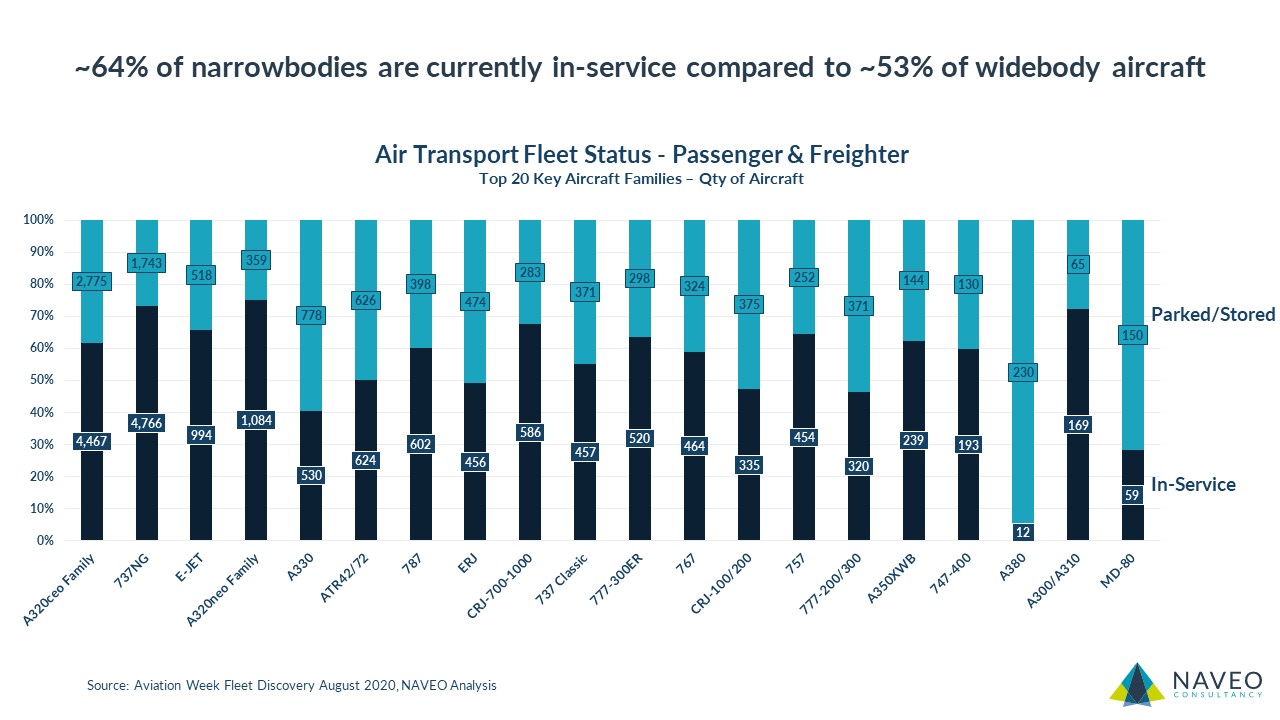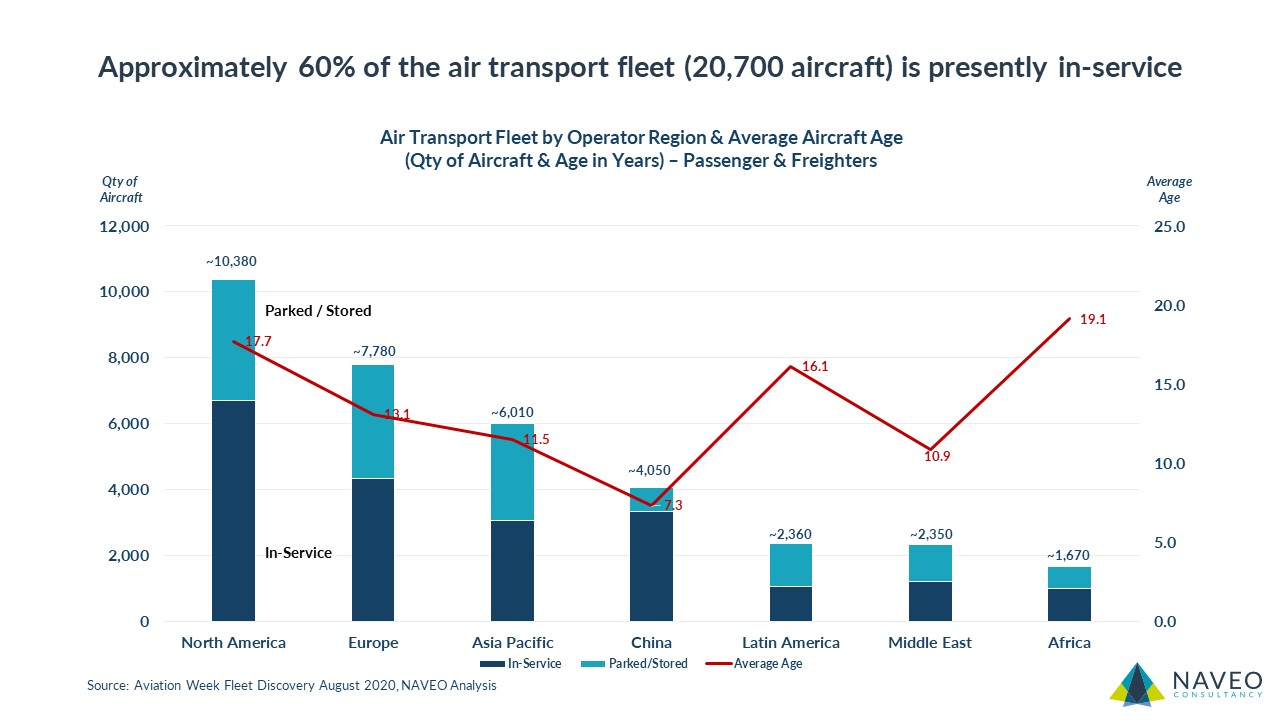After our recent post about % fleet active/stored by region, NAVEO was asked about key aircraft models and whether narrowbodies are indeed showing higher levels of activity compared to widebodies, etc., and, whether cargo and regional aircraft were holding up well?
Overall, (passenger & cargo) 60% of the fleet is now in-service, and 40% is parked/stored. Narrowbodies lead the way with 64% of aircraft in-service and 36% stored. 53% of widebodies, impacted by reduced long-haul travel demand, are in-service. 58% of RJs are in-service, as are 57% of turboprops.
But, the devil is in the detail. Aircraft activity depends upon their size, age, operating costs, maintenance requirements, region, operator business model, etc.
In the chart below, you can see that 73% of 737NGs are in-service, as are 75% of A320neos. Only 5% of A380s, 41% of A330s, and 46% of 777-200/300s are active.
Of course, even if the aircraft are active, utilization is down (as are load-factors), and recovery is sluggish.
Regarding Cargo, 79% of cargo aircraft are active. Of this, 88% of cargo widebodies are active, and only 12% are stored. But, as a % of the fleet dedicated freighters are less than 10%, so for MRO, it’s the passenger fleet that is key to watch.


